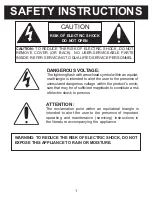
13
Customer Service:
1-877-777-8042
Food Preparation & Reheating Tips
Thawing and Reheating
Vacuum-Sealed Foods
Always thaw foods in either refrigerator or microwave — do not thaw perishable
foods at room temperature.
To reheat foods in a microwave in a FoodSaver
®
Bag, always cut corner of the
bag before placing it on a microwave-safe dish. However, to avoid hot spots, do
not reheat bone-in meat or greasy foods in microwave within a FoodSaver
®
Bag.
You can also reheat foods in FoodSaver
®
Bags by placing them in water at a low
simmer below 170°F (75°C).
Preparation Guidelines
for Meat and Fish:
For best results, pre-freeze meat and fish for 1-2 hours before vacuum sealing
in a FoodSaver
®
Bag. This helps retain the juice and shape, and guarantees a
better seal.
If it’s not possible to pre-freeze, place a folded paper towel between meat or fish
and top of bag, but below seal area. Leave paper towel in bag to absorb excess
moisture and juices during vacuum sealing process.
NOTE:
Beef may appear darker after vacuum sealing due to the removal of oxygen. This is not an
indication of spoilage.
Preparation Guidelines for Hard Cheeses:
To keep cheese fresh, vacuum seal it after each use. Make your FoodSaver
®
Bag
extra long, allowing one inch (2.54 cm) of bag material for each time you plan
to open and reseal in addition to the three inches (7.62 cm) room you normally
leave between contents and seal. Simply cut sealed edge and remove cheese.
When you’re ready to reseal the cheese, just drop it in bag and reseal.
IMPORTANT:
Due to the risk of anaerobic bacteria, Soft cheeses should never be vacuum sealed.
Summary of Contents for VS3000 Series
Page 2: ......










































